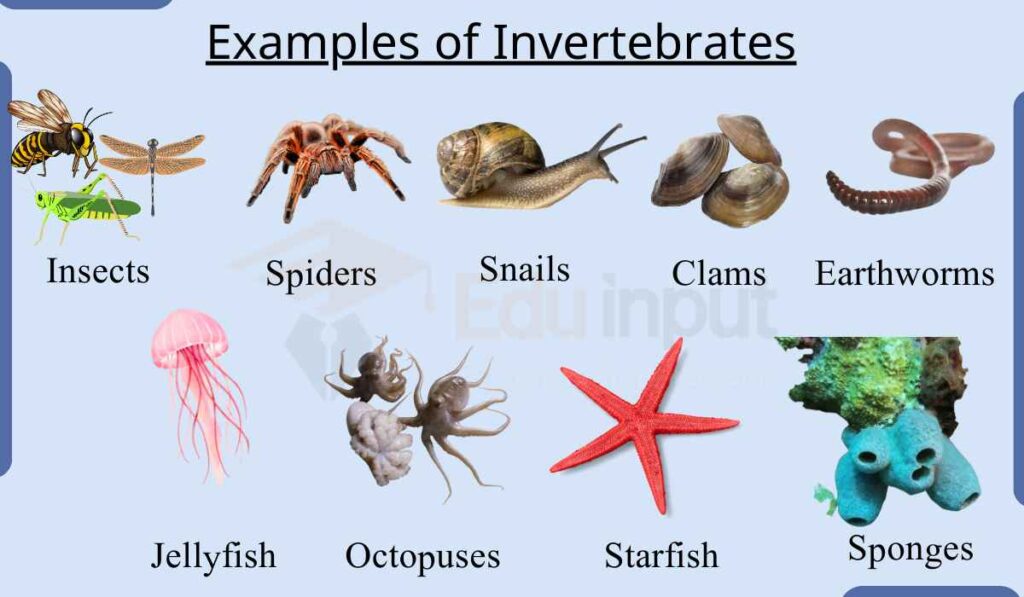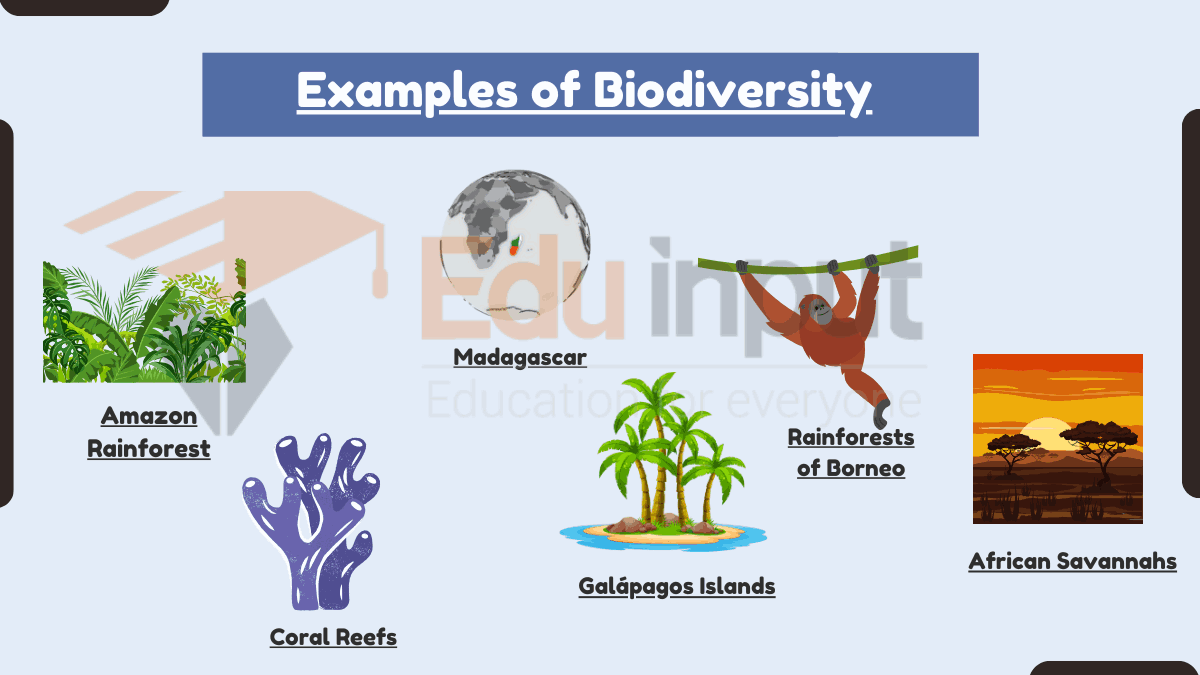Examples of Invertebrates
August 6, 2023
Invertebrates are animal that do not have vertebral column or backbone. They are found in every ecosystem.

9 Examples of Invertebrates
Here are 9 Examples of invertebrates, their habitat, and why they are considered invertebrates:
1. Insects
- Habitat: Land, water, and air
- Why considered an invertebrate: Insects do not have a backbone (vertebrae). They have a hard exoskeleton, three pairs of legs, and two pairs of wings (in most cases).
- Interesting fact: There are over 1 million known species of insects, making them the most diverse group of animals on Earth.
2. Spiders
- Habitat: All parts of the world, except for Antarctica
- Why considered an invertebrate: Spiders do not have a backbone (vertebrae). They have eight legs, a hard exoskeleton, and chelicerae, which are two fangs that inject venom into their prey.
- Interesting fact: Spiders are not insects. They are arachnids, which is a separate class of invertebrates.
3. Snails
- Habitat: Land, water, and even trees
- Why considered an invertebrate: Snails do not have a backbone (vertebrae). They have a soft body that is protected by a shell. They have a head with a pair of eyes and a pair of tentacles.
- Interesting fact: Snails can breathe through their skin, which means they can survive underwater for short periods of time.
4. Clams
- Habitat: Both saltwater and freshwater habitats
- Why considered an invertebrate: Clams do not have a backbone (vertebrae). They have a hard shell that is closed on both ends. They have a muscular foot that they use to burrow in the sand or mud.
- Interesting fact: Clams are filter feeders, which means they eat tiny plants and animals that are suspended in the water.
5. Earthworms
- Habitat: Soil
- Why considered an invertebrate: Earthworms do not have a backbone (vertebrae). They have a long, segmented body. They have a soft body that is covered in mucus.
- Interesting fact: Earthworms are essential for the health of the soil. They help to aerate and fertilize the soil, which makes it more productive for plants.
6. Jellyfish
- Habitat: Both saltwater and freshwater habitats
- Why considered an invertebrate: Jellyfish do not have a backbone (vertebrae). They have a gelatinous body and a central mouth. They have stinging cells that they use to defend themselves and capture prey.
- Interesting fact: Jellyfish are one of the oldest animals on Earth. They have been around for over 500 million years.
7. Octopuses
- Habitat: Both saltwater and freshwater habitats
- Why considered an invertebrate: Octopuses do not have a backbone (vertebrae). They have a head with eight arms. They have a hard beak and sharp suckers on their arms.
- Interesting fact: Octopuses are very intelligent animals. They are able to solve puzzles and escape from complex traps.
8. Starfish
- Habitat: Both saltwater and freshwater habitats
- Why considered an invertebrate: Starfish do not have a backbone (vertebrae). They have a spiny skin. They have five arms that are connected to a central disk.
- Interesting fact: Starfish can regenerate their limbs. If a starfish loses an arm, it can grow a new one.
9. Sponges
- Habitat: Water
- Why considered an invertebrate: Sponges do not have a backbone (vertebrae). They are the simplest invertebrates. They are filter feeders that live in water. Sponges do not have a brain or a nervous system.
- Interesting fact: Sponges are filter feeders. They eat tiny plants and animals that are suspended in the water.
File Under:

 written by
written by 


Leave a Reply